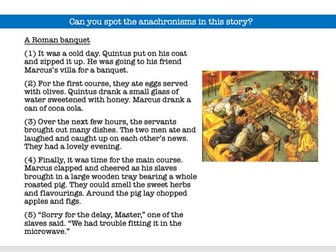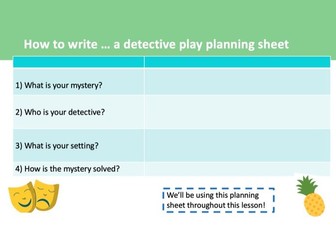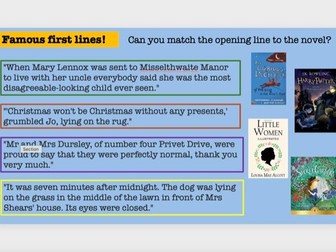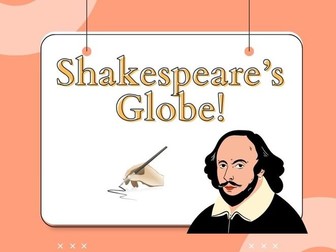
Creative writing ... historical fiction
This is a fun, accessible class allowing students to engage with the historical fiction genre. With lots of prompts it gives children the confidence to plan and write a story.
This is a fun class, enabling students to explore their creative side with a step-by-step guide to creating historical fiction. It can be used in a classroom setting, but also works well if you are running a creative writing or drama club or similar.
It is a relatively ‘light’ class in terms of academic content. It can (and has been!) enjoyed by students from age 7 up to about age 14 depending on ability and engagement levels. It creates a fun, lively atmosphere and moves very quickly through the different stages of planning and writing. It can also be used as a history lesson to reinforce a topic at the end of a module.
The lesson is structured as follows:
a) Introduction to historical fiction. What is historical fiction? What is an anachronism? There are a few altered pictures where students can pick out the very obvious anachronisms. There is also a (very cheesy!) short story set in Roman times which students can read as a class, or in groups/pairs and find the anachronisms (e.g. zips, microwaves)
b) Students are all given a ‘planning sheet’ (This is available to print out at the end of the powerpoint)
c) Planning 1 – what is your favourite period in history? (There are lots of visual prompts.) This can lead to lots of good chats about different historical periods, characters etc.
d) Planning 2 – who is going to be your main character? (Some discussion about how you can make them particularly interesting.)
e) Planning 3 – what is going to be your character’s mission? What obstacles will you put in their way? And what will the outcome be?
f) Now students are given some time to write their stories. (This can be done individually, groups or pairs.) There are some starting sentences which can be used as prompts if required.
g) Students are invited to share their stories, in pairs/groups/class.
h) There is an additional page which discusses how you could take your story further, and looks at different ways to research backgrounds for historical fiction.
This is a fun class, which prompts student to think more about how we create historical fiction.



